Have You Ever Heard of a “Two Year Visit”?

CONTENTS
Top photo: koshinuke_mcfly on Pixabay
Timothy shares his tale of how 2021 began with a visit to a shrine…
Have you already made your wishes for 2021? If you haven’t, then perhaps you might like to know about how I got my fortune this year before you discover yours!
An Introduction
A week before New Year’s Eve, I told my friend I could not go home for Christmas or New Year’s Day due to the Coronavirus pandemic, which still has the world in its grip.
I had already brainstormed several ideas on how I would spend my New Year’s celebration in Japan alone. In fact, I was searching for the highest mountain or viewpoint in my local area to watch the first sunrise of 2021. But as we all know, things change.

Japanese mikan – orange-like fruit which can be a nice, simple gift.
Three days before New Year’s Eve, my friend calls me.
“Tim! I just spoke to my mother, and she said it was okay for you to come celebrate New Year’s Day with us! I’m so excited because I can introduce my family to you!”
This was indeed a special occasion – my first New Year in Japan, and I wouldn’t be alone.
On New Year’s Eve, we arrived at his family home, did our greetings, and tucked ourselves under the warm kotatsu that was already prepared. I made sure to bring some snacks and the seasonal fruit – mikan as an appreciation for the hospitality. Like most cultures, whenever you are visiting someone’s home, you should almost never go empty-handed.
The Two Year Visit
In Nagano prefecture, there is a cultural tradition called the ni-nen mairi (二年参り) – a “two year visit”, where essentially you go to the shrine ‘between’ the year that just passed, and the year that’s about to arrive. So, at 11:45pm, we made our way to the local shrine to do just that. When we arrived, there were about 15 other people who were waiting in line to make their prayers to the local god or spirits. A campfire had also been set up to keep everyone warm in the minus 3°C temperature.
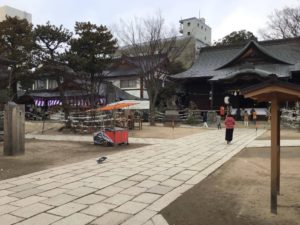
Yohashira Jinja (shrine) in Matsumoto-shi, Nagano-ken.
Once it’s your turn to pray, there are a few things you need to do. The first step is to give an offering inside a box placed in front, usually a five- or fifty-yen coin (because they are the only coins with holes, and are considered lucky). Second – aisatsu (あいさつ) – greeting by bowing twice. Third, clap two times and pray (in the case of New Year, saying thank you for the previous year and for continued support in the New Year is important).
Lastly, another aisatsu (あいさつ) before you leave. Now during the prayer, many people tend to make a wish during this time. In this period, I would assume most are wishing for an end to the coronavirus pandemic soon.
Now for the New Year Fortune
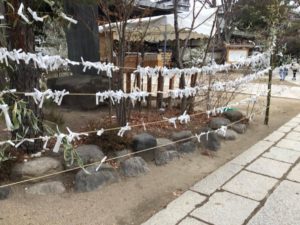
Fortunes with no luck tied to trees at Yohashira Jinja.
The most exciting part of the shrine visit is getting to pick out your fortune. After making another offering (which may vary from shrine to shrine), you pick your fortune out of a box like a lottery. Each fortune is numbered and is printed on a rolled-up strip of paper. There are two parts to your fortune.
First is a general message about your luck called kami no kyou (神の教) – “god’s teaching”. The second part is advice for many aspects of your life, from education, relationships, health, business, to even your personal battles. It is important to note that these fortunes contain old Japanese which even locals struggle to understand. So, it’s worth having someone there who can translate your fortunes for you.
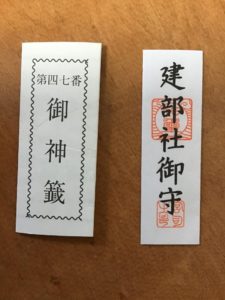
Rolled up printed fortune (left) and Amulet (right)
Another thing to keep in mind is there are three levels of luck when you pick out your fortune. Very simply, you either get ‘good luck – ‘normal luck’ – or ‘bad luck’.
In the event you get ‘bad luck’, the general practice is to tie your fortune strip to a tree or designated string in hopes that it will ward of bad spirits and reduce the chance of ‘bad things’ happening.
During your shrine visit you may also choose to purchase an amulet. As long as you have this on your person, it will keep you safe and protect you from bad spirits, according to common belief.
Conclusion
If you haven’t made your first shrine visit of the year, I bet you are now itching to experience a part of this interesting cultural tradition and find out what your fortunes for 2021 are! I hope you have a better understanding of shrine visits in Japan and the common process. Have a great year, and I wish you good fortune!
Want to make your own experiences in Japan? Now you can as an Assistant Language Teacher! For more information, read all about the job of an ALT!
Photo Credits:
Top photo: koshinuke_mcfly on Pixabay
Additional photos for this article were provided by Timothy Leong, used with permission
All other content (text) created by the original author and © 2021 MUSUBI by Borderlink
RELATED
-
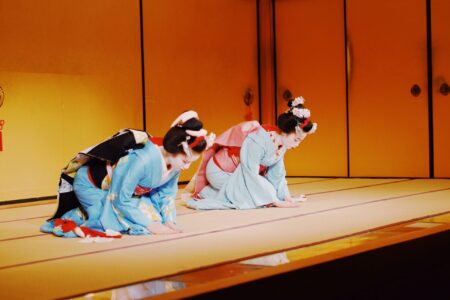
Take a Bow: How Japan Changed Me
Top photo: wang xi on Unsplash Sure, when you live overseas you expect some things will be different from the… -
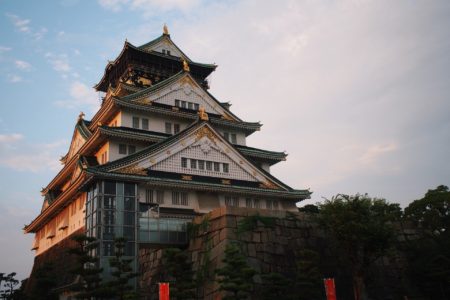
The Past is the Present in Japan
Top Image: leolevng on Pixabay A brief trip around the Osaka and Kashihara areas, and the ancient treasures on… -
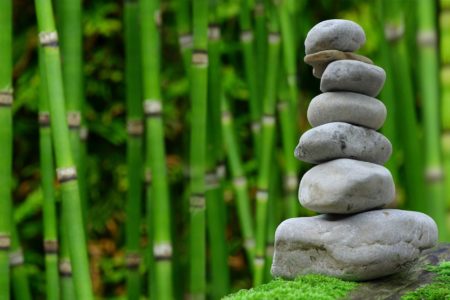
Come for the Shinto, Stay for the Zen
Top Image: Schäferle via Pixabay Buddhist temple in Yamaguchi prefecture.What’s the difference between a shrin…
PEOPLE

Timothy Leong
From Australia
Has lived in Japan for 2 years!


